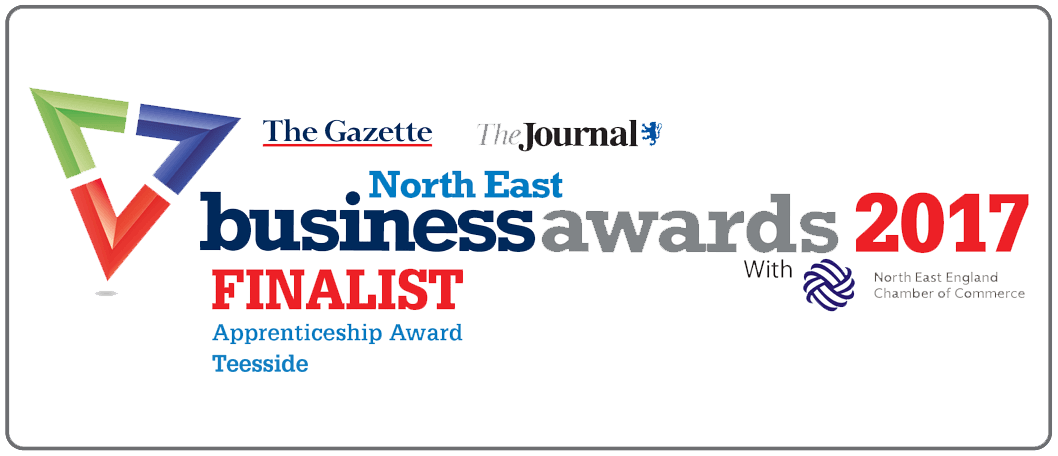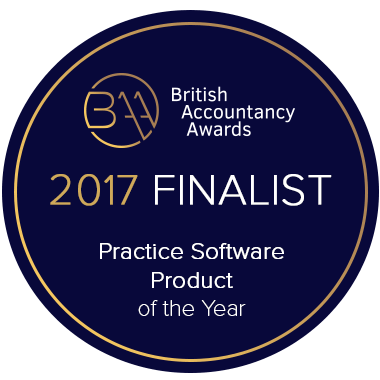
Mistake – 12 of 12
A poor proposal or letter that lets you down at the final hurdle.
A proposal is one of the hidden but very real contributors to great conversion rates, yet many proposals are sub standard. It’s no surprise then that one of the common questions we are asked is:
How do I write a great sales proposal and or letter that will help me win more customers?
Our team has conducted intensive in-depth research on this topic. We have folders full of accountancy proposals in our offices, probably some of them belonging to your competitors.
There’s not one really good one amongst them!
Poor Proposals
Most of the proposals we have reviewed have been constructed in a way which looks like a preface to a solicitor’s contract. Almost all are badly laid out, some use some horrible typefaces – one or two even use Comic Sans!
They appear to be a template, lacking any thought of the potential customer, and offering him no compelling reasons to go to the trouble of changing his accountant.
What reaction does your proposal create?
Example of a genuine proposal
Dear Prospect
Fixed Price Agreement
Accounts for the period ended 31 March 2011
It was a pleasure to meet you on Monday and I trust you found our meeting useful. I have now had a chance to review our costing, and I would like to thank you for giving us the opportunity to quote for our services.
To avoid any misunderstanding, this fixed price Agreement defines the services ABC Accountants will perform for you for the year ended 31 March 2011.
Your Fixed Fee
Your investment in our services will be £10,800 plus VAT (£900 plus VAT per month)
For this fixed fee we will:-
- Prepare the statutory financial statements
- Audit those statutory financial statements
- Prepare abbreviated financial statements for submission to Companies House
- Deal with all business tax matters, including preparing corporation tax computation and preparing and submitting your Corporation Tax Self-Assessment return to HM revenue & Customs
- Deal with correspondence from the Inland Revenue
Can you spot the problem?
- Here’s the initial problem… First, it’s all about the costs and that’s the focus. Cost is the language, and it’s even got the words ‘quote’, ‘fixed fee’, and the numbers all on the first page.
- Second, it’s all about the accountants and the legal obligations of the service. It’s missing the client’s needs, mood and desire altogether. This is the type of material we cover during our live events. However, in this report we want to give you some quick fix ideas you can take away and implement.

“It can be hard work, time consuming and expensive opening new doors with potential new customers. First impressions count, and a poor proposal, badly constructed and crudely designed can make the difference between a warm reception and a great new client and a hastily closed door and a lost opportunity. Take the time to get your proposal right.”
David Oliver | Founder | Insight
A misguided start!
Many of the proposals our team are asked to review are not proposals at all; this is one of the primary misunderstandings. What some call a proposal is in fact an agreement or worse a standard ‘quote’. The language used is that of a legal order, ‘fixed price contract’ or ‘fee quote’, the layout and detail is that of an agreement. Often containing standardised bullet point lists like the following:
- Prepare the statutory financial statements
- Audit those statutory financial statements
- Prepare abbreviated financial statements for submission to companies house
- Deal with all business tax matters, including preparing corporation tax computation and preparing and submitting your corporation tax Self-Assessment return to HM Revenue & Customs’
- Deal with correspondence from the Inland Revenue
Perhaps worse still, some go into fee protection, money laundering, fee analysis, fee menus, agreements, standing order forms and more. These agreements are boring, dull and totally uninspiring and at their most devastating they run the risk of frightening the prospect.
They fail to capture what was discussed during the meeting, and have no real direction in terms of what you want the reader to do. They do not capture the mood, need, desire or heart of the opportunity. If they achieve anything they achieve a focus on price and terms, and straight away you are gifting the few interested prospects you still have, with a negotiation focus and that’s where they will start!
In real terms then, the document achieves nothing and a week later, you are left chasing up this poorly conceived document, in the vain hope your prospect might have read it, seen the price and said, ‘okay’. Most decision makers will roll their eyes as they thumb through the thoughtless black and white text, which only reinforces their view that accountants are boring. If you are going to embark on a telemarketing programme with a view to winning new clients, then the strength of your proposal document is paramount.
Why should you be writing a proposal and how is it different from an agreement?
The adopted process for most accountancy firms seems to be as follows:
- Attend an appointment with a prospective customer
- Send a standard agreement letter with quote
- Leave this with the customer for a while before chasing
- Gently chase once or twice
- No response or reply normally taken as a sign of no interest
- You feel rejected
- Customer has missed an opportunity to work with a better firm and save tax
TWO important rules – even an excellent proposal will not achieve what you could not achieve face to face. It can however undo what you may have achieved in a face-to-face meeting.
- Ask the prospect what their preference and expectation of the proposal is. Do they want a one-page document or a full 20-page paper with a detailed analysis? If they are too busy offer perhaps PowerPoint that you will return with.
- The reason to write a proposal is to explain the problem/need/requirement that the prospect has, how you offer the very best solution, what the benefits will be once they use you, the investment required, how they can pay, testimonials and case studies and a clear next step.

Never, ever, post a proposal
Always arrange a second meeting to see the prospect face to face.
In the current market, decision-makers are fearful and taking longer to make decisions. Changing accountancy firms is an important business decision.
It is strategic, and not a decision anyone should make lightly. It is fair to assume winning a new customer will require several visits and multiple communications from you before they change firm. Therefore, at the very least, in the first meeting, arrange the next face-to-face meeting. You will be amazed how simple this may be!
Simply explain you would love the opportunity to work with them, therefore can you arrange a meeting to take them through a detailed quotation. There are hundreds of reasons why your proposal may not get read, misunderstood or simply not liked. Therefore don’t leave it to the luck of the draw – adopt a new approach and make sure when you are in the first meeting you get another one.
Where to start when you write a proposal
Our copy-writing team have been used by many firms, to review and subsequently to re-write proposals. Some of these newly crafted proposals have been instrumental in winning very significant fees. Despite doing this day in, day out when writing a proposal, our team will refer to a simple acronym to help focus each word.
We use an acronym ‘WISCDA’.
W – Wavelength – get on your clients wavelength
I – Create Interest
S – Sell benefits
C – Add Conviction
D – Create Desire
A – State Action
Wavelength
Quickly get on the client’s wavelength – the best way to do that, is to focus on the common ground between you. Write about his requirements, his goals, his department, his solution. Delete the word ‘I’ and your own company name wherever possible, and concentrate on ‘You’.
Listen to the words he used in your appointment, and build them back to him in your letter. He will respond favourably to his own words, his subconscious reaction will be, ‘These people are talking my language!’ Of course you are! The quickest way to get on the wavelength is to refer to today’s call and to the particular subject or project that you discussed.
Getting on his wavelength will increase his confidence in you – something that is vitally important to someone considering a change of firm.
David Oliver, the founder of Insight Marketing, insists that all of us internally use what he calls the 4:1 Rule Of Thumb. For every one reference to ourselves we do our level best to mention the prospect four times. So when our team is writing for accountancy firms, the aim is to mention the potential client four times, for every one time the accountancy firm refers to itself. This is
achieved with words like, you, yours, your business, ABC Ltd and so on
Create Interest
This refers to the opening, but more particularly to the overall effect of the letter. Ask yourself the questions ‘What would this letter do to me? Does it grab me? Is it interesting?’
We achieve this not with sterile content, but by liveliness and projection. We can make our letters lively with the use of short words, short sentences and short paragraphs.
Research shows that people find eight-word sentences easiest to understand and easiest to digest. On the other hand, sentences of thirty words or more are hard to understand and hard to follow. So we try for sentences averaging twenty words or less.
The words used need to be clear, precise, and unambiguous. With the spoken word we have the added advantage of voice inflection. We don’t have that with a letter: the words have to stand or fall on their own merit. The recipient can’t ask questions for clarification: we need to get it right.
Plus indent two or at the most three paragraphs to give the proposal visual interest.
Explain the Benefits
If we do nothing else, we must get this right. The letter or proposal must, with strength, give a reason to buy. Benefits are the payload of the letter. They are the reason that you get business in the absence of track record.
In the letter or proposal clearly restate the benefits. Align them with his words, his concepts. Where you can, place particular emphasis on the key benefit or benefits that you detected in your visit. Parcel the letter around benefits. Remember, benefits whet the appetite and make your prospect thirsty.
Conviction And Believability
People in the buying environment are tired of hype: at best they will be sceptical. So how do we retain conviction or believability?
- Quantify wherever you can, with small amounts of interesting and compelling facts, figures, amounts and savings.
- Quote genuine, convincing case stories or client comments.
- Avoid servile phrases such as ‘We beg to inform you’.
- Avoid exaggerated claims or superlatives words like fantastic, wonderful, brilliant, marvellous.
- Write conversationally – just how you speak Confidence cannot be built on words or concepts that sound, ‘Over the top’ or appear untrustworthy. The written word can be believed more readily than the spoken word – which is another reason for keeping the letter believable.
Desire
When he gets to the end of your letter, the prospect should be thinking, ‘This accountancy firm is a good find’, or ‘This solution, with business development, tax savings and a service guarantee, is obviously right for me’. It should affirm the feeling of rightness, which our prospect should have towards you.
Action
This is crucial and many people get it wrong. In most cases we are at a stage in the relationship where we follow the golden rule of, ‘Always maintain the initiative’. What we mean is that we determine the next course of action, not the prospect. We restate it in the letter, to nudge the sale forward one step. It is a commitment. It forces us to DO the agreed action, and makes it very
easy for us to call back, when we said we would, ‘As promised’. The majority of letters will state the action you are taking. We never end a letter by saying, ‘Please let me know if you require further information’, or ‘We look forward to hearing from you’. That is the cardinal sin of letter-writing. Instead, write, ‘I will telephone you again on the 24th of June’. This leaves the door open and gives us the unspoken right to go back to the prospect.

Categories: Accountants, Biggest Mistakes, Sales













